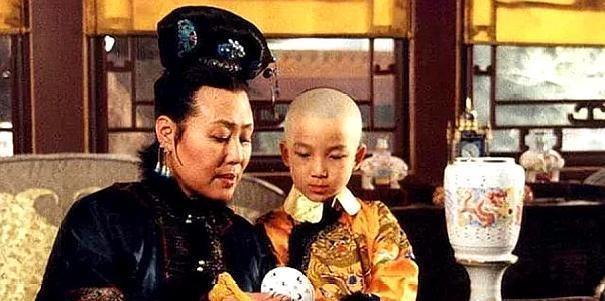The most prestigious emperor in the history of the Qing Dynasty is undoubtedly the Kangxi Emperor, who is also the longest reigning emperor of the Qing Dynasty, from 1662 to 1722, a total of 61 years, during which not only opened the kangqian prosperous era, but also pacified san Francisco, repelled the Tsarist Russian invaders in the north, and recovered Taiwan and the Penghu archipelago, a well-deserved emperor for thousands of years.

However, it was such a legendary emperor who almost died of smallpox when he was young. Readers who have watched the TV series "Kangxi Dynasty" know that Kangxi suffered from smallpox when he was a child, and Empress Xiaozhuang worked tirelessly to treat Kangxi at the risk of infection, and only then was he able to survive and finally ascend to the throne.
It can be seen that smallpox would be an incurable disease in the Qing Dynasty. Even if the emperor got it, the imperial doctors had no choice but to take medicine and stand firm, and life and death were all resigned to fate. It is worth mentioning that Kangxi's eldest brother and fourth brother both had smallpox, but they were not as lucky as Kangxi, and eventually died of smallpox, so Kangxi successfully ascended the throne.
In fact, about smallpox, in China's Tang and Song Dynasties, there have been records, but also mentioned a treatment method, that is, "human pox vaccination method", which means that the pus in the pox of smallpox patients is applied to people who are not infected with smallpox, so that these uninfected people produce antibodies, which sounds exactly the same as today's vaccination.
It wasn't until Kangxi's own son Yin Qi also had smallpox that Kangxi made up his mind to break through smallpox. He had consulted the "human pox vaccination method" of the ancients before, but in view of the risk, if the amount of vaccination was not well grasped, it was easy to poison and poison, and he did not dare to try. Later, the arrival of an English missionary named John Hung changed everything.
At the end of the 17th century, Britain had begun to have signs of science and technology, which undoubtedly laid the foundation for the first industrial revolution. The British missionary John Hung grew up in this environment and had a strong spirit of scientific experimentation. After he came to Beijing, he saw that Kangxi did not dare to use this "human pox vaccination method", so he applied to Kangxi to use Western clinical experiments to test the reliability of the "human pox vaccination method".
At Hong Ruohan's request, Kangxi gave him 30 healthy palace maidens, allowing him to quickly study the cure for smallpox. Hong Ruohan used the syringe to remove the pus from the acne and then inoculated the 30 healthy palace women one by one. After that, they were kept in a room and served by eunuchs and palace ladies who had already had smallpox.
After 1 month passed, 4 of the 30 people unfortunately contracted smallpox and died, and of the remaining 26 people, 22 were successfully vaccinated against smallpox and did not have any symptoms of smallpox, even if the 22 people and smallpox patients were later put together to live together, there was no infection. Finally, there were 4 more, although they were infected with smallpox, but they eventually survived the erosion of the virus and survived to produce antibodies.
Therefore, Hong Ruohan's clinical trial of 30 people eventually survived 26 people, and 22 people were successfully vaccinated. This was a remarkable feat at the time, and the doctors unanimously recognized John Hung's success. In the end, John Hung moderately reduced the concentration of smallpox virus extracted from the experiment, and successfully developed a smallpox vaccine.
Since then, the Qing Dynasty royal family has never been invaded by the smallpox virus, the Kangxi Emperor Long Yan Dayue, reward Hong Ruohan thousands of gold, Hong Ruohan took this money to mass-produce smallpox vaccine, and also wrote a letter to send the formula and method back to Britain, within a few years, the incurable disease of smallpox completely disappeared in history. Today, smallpox viruses have become largely extinct in human society.
It is also thanks to the foresight of the Kangxi Emperor and the scientific research spirit of Hong Ruohan, plus 30 palace women who risked their lives as "guinea pigs", that humans can be light on the smallpox virus today.